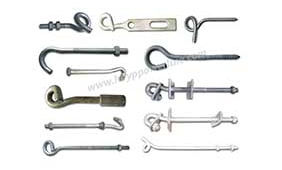What is a cable clamp used for?
A cable clamp, also known as a cable clip or cable tie, is an essential component used in a variety of applications to manage and secure electrical cables, wires, hoses, or tubing. These versatile devices are designed to maintain cable organization, prevent tangling, and protect cables from potential damage, making them an indispensable tool in various settings.
1. Cable Management: Cable management is a critical aspect of maintaining an organized and efficient electrical system. Cable clamps play a pivotal role in bundling and routing cables neatly. They help prevent clutter and chaos in homes, offices, data centers, and industrial environments. This organized approach not only enhances safety but also simplifies maintenance and troubleshooting.
2. Automotive Applications: In the automotive industry, cable clamps are employed to secure and organize wiring harnesses. These harnesses are the intricate networks of cables and wires responsible for powering and controlling various electrical systems within vehicles. Cable clamps prevent these vital components from dangling or becoming entangled in the engine compartment, thus ensuring the reliable performance of the automobile.
3. Marine Environments: Boats and ships operate in harsh and often corrosive environments. Cable clamps are employed to safeguard electrical and communication cables from exposure to water, salt, and other challenging conditions. These clamps keep the cables securely fastened, reducing the risk of damage or malfunction on marine vessels.

4. Construction and Building Projects: In construction and building projects, the installation of electrical wiring and conduit is a fundamental task. Cable clamps are used to secure these vital components to walls, ceilings, and other structural elements. This practice maintains the integrity of the electrical system and ensures that the wiring remains organized and protected.
5. Electrical Panels: Inside electrical panels and control cabinets, electrical cable clamps are indispensable for organizing the web of wires and cables. This arrangement not only keeps the cables in place but also helps prevent accidental disconnections, which can lead to costly downtime and safety hazards.
6. Data Centers and Networking: The ever-expanding world of IT and networking relies heavily on cable management. Data centers and server rooms use cable clamps to manage and bundle network cables, creating a structured and easily maintainable infrastructure. This ensures that data flow remains uninterrupted and that maintenance and troubleshooting are more accessible.
7. Industrial Equipment: In manufacturing and industrial settings, machinery and equipment often involve intricate electrical systems. Cable clamps are used to secure and route cables within these machines, reducing the risk of damage or interference with moving parts. This practice contributes to the overall efficiency and safety of industrial processes.
8. Home Electronics: In our homes, cable clamps play a part in maintaining the organization of home entertainment systems. They secure HDMI cables, power cords, and audio/video cables to prevent tangling and tripping hazards. This tidying up of the cable chaos not only enhances the aesthetics of the setup but also minimizes the risk of accidents.
9. Outdoor Applications: Even in outdoor environments, cable clamps have their place. They secure irrigation system cables and hoses in landscaping and gardening projects. By keeping these components in place, they prevent damage and ensure that water is distributed efficiently to support healthy plant growth.
In summary, Yipeng cable clamps are fundamental tools that ensure the reliability, safety, and efficiency of electrical systems across a wide spectrum of applications. Their ability to manage and protect cables and wires makes them an essential component in countless industries and everyday scenarios, contributing to the seamless functioning of our modern world.

